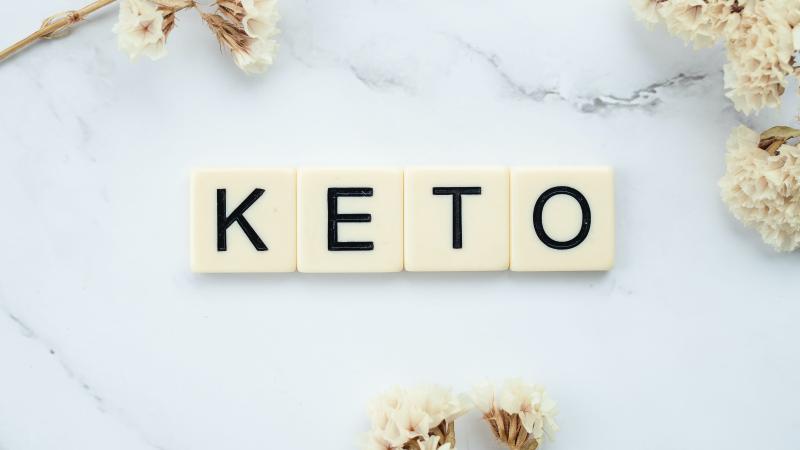The Truth about the Ketogenic “Keto” Diet: Breaking it Down
There are countless people, resources, media outlets, and companies raving about their weight loss success while following the keto diet. This blog post will explore ketogenic diet recommendations, how ketosis works in the body, potential cons, specifically who this diet was intended for, and more.

Brooke Smith, Dietetic Intern, 2021
Monday, July 11, 2022
There are countless people, resources, media outlets, and companies raving about their weight loss success while following the keto diet. Because it’s become such a hot topic trend, we now see food products labeled “keto-friendly,” “low or no-carb,” and “keto-approved.” What exactly is the keto diet? Is it safe? And what was it’s intended use? This blog post will explore ketogenic diet recommendations, how ketosis works in the body, potential cons, specifically who this diet was intended for, and more.
What is the Ketogenic Diet?
The ketogenic diet is a high fat, moderate protein, low carbohydrate diet which differs significantly from the Dietary Guidelines for Americans or USDA’s MyPlate general healthy eating recommendations. Essentially, the keto diet aims to put the body into ketosis – which is a mechanism in which your body breaks down fat, turns it into ketones, and utilizes ketones as it’s primary energy source. This occurs when your body is starved of carbohydrates, or glucose, the brain and body’s #1 source of energy. The keto diet promotes consuming less than 50g of carbohydrates per day. This is equivalent to having just one banana and one slice of toast for the entire day. Many nutrient-dense foods like fruits, vegetables, whole-grains, lentils and legumes, are carbohydrate-containing and are often restricted or avoided altogether when adhering to the ketogenic diet.

Is the Keto Diet safe?
The keto diet may have both short and long-term health risks. For instance, by eliminating whole grains and certain fruits and vegetables, you could be missing out on a variety of nutrients essential for the body to function optimally. This could potentially lead to certain nutrient deficiencies which could cause a variety of unwanted symptoms. Fruits, vegetables, whole grains, lentils and legumes also contain fiber which is extremely important for regulating the digestive system, helping with satiety, and lessening chronic disease risk.
Fiber Recommendations:
- Men – 38 grams per day
- Women – 25 grams per day
Without adequate fiber, one may experience constipation which is not ideal for optimal digestive health. With the high-fat keto recommendation, consuming large amounts of saturated fat may not be the best for your heart health, could elevate cholesterol, and increase the risk for chronic conditions like heart disease. A short-term effect often seen by those following the keto diet is what people have coined the “keto flu” where they experience flu-like symptoms including headaches, upset stomach, fatigue, and even dizziness. If you are choosing to adhere to the keto diet, it is essential you meet with a Registered Dietitian or your Healthcare Provider to learn more about how the diet may affect your overall health and well-being.

What was the Ketogenic Diet’s intended use?
Clinically, the keto diet is intended for those with epilepsy – a seizure condition. The diet has helped epilepsy patients manage their seizure symptoms with guidance from a Registered Dietitian and their healthcare team. Typically, those aiming to follow the keto diet never actually reach ketosis and would be considered as following a modified form of the Keto or Atkin’s (a former low-carb diet fad) diet. An individual consuming minimal amounts of carbohydrates may experience low energy availability, fatigue, altered sleep patterns, or other symptoms.
Take Aways
Aim to balance your meals and snacks by choosing…
| Protein | Carbohydrates | Color (Fruits and Vegetables) | Healthy Fats |
|
|
|
|
This will help ensure you meet both your macro and micronutrient needs, gain quality nutrition utilizing the benefits of each food group, and positively contribute to your overall health and wellness.
And if weight loss is your goal - you can absolutely lose weight and still consume carbohydrates. For weight management strategies, visit with a Registered Dietitian at the Campus Rec or seek guidance from your healthcare practitioner!
We can absolutely enjoy the food we love and continue to accomplish our goals. The keto diet can be extremely restrictive – eliminating entire food groups and, as a result, essential micronutrients. It may offer short-term success but is often not sustainable over a long period of time. Consider your long-term health before jumping on board with a fad diet like keto.
Lastly, understand that most of the messaging you see on your “keto-friendly,” “low or no-carb,” and “keto-approved” products are marketing ploys – an attempt to convince you, the consumer, that because their product says “keto” it somehow means the product is healthier for you.. Oftentimes, it’s not.
References
Gordon, B. (2019, May 15). What is the Ketogenic Diet. EatRight. https://www.eatright.org/health/wellness/fad-diets/what-is-the-ketogenicdiet.



